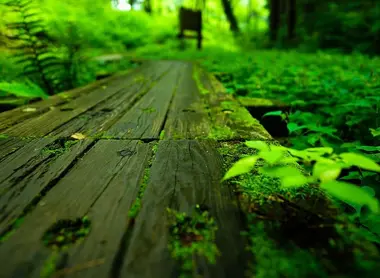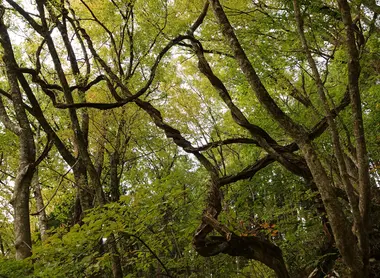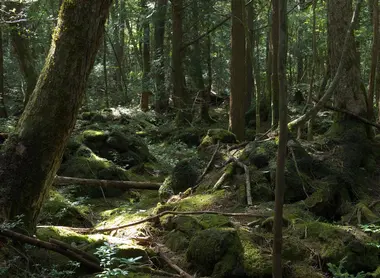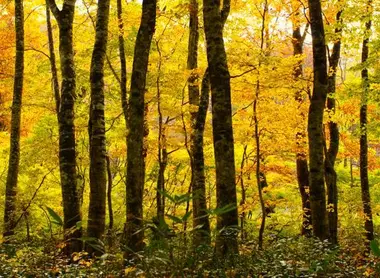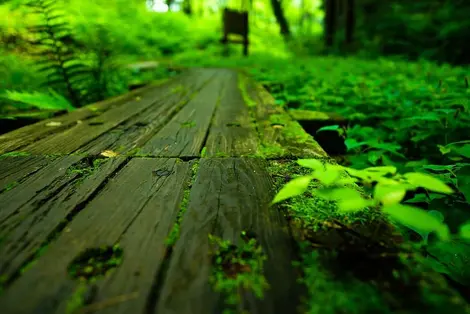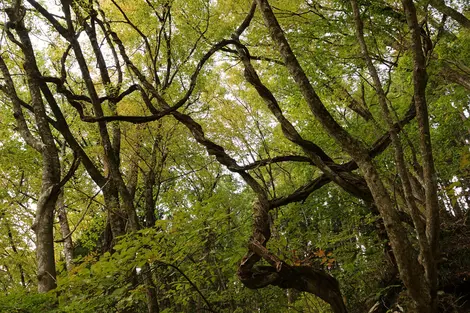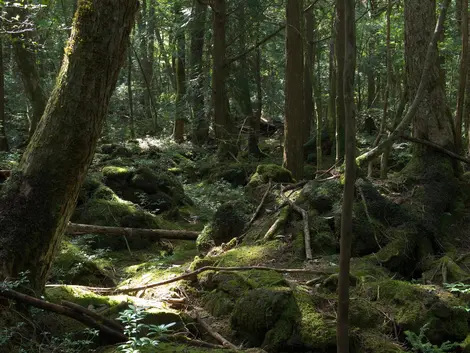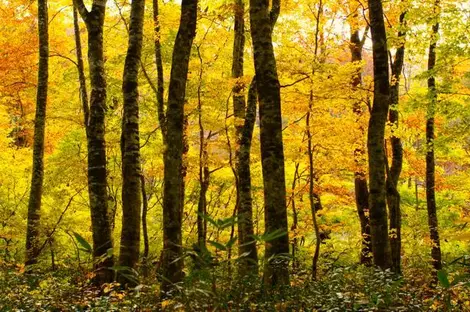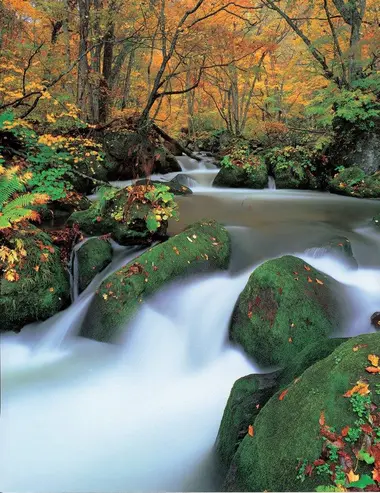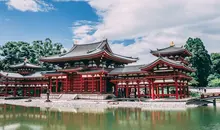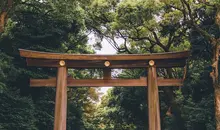Shinrin-yoku: forest therapy
- Published on : 03/10/2025
- by : Phoebe
- Youtube
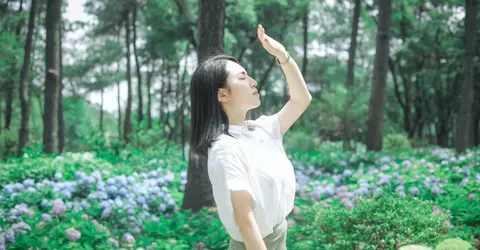
Shinrin-Yoku
Se Nuno
Shinrin-yoku, or forest bathing, is the Japanese practice of immersing yourself in nature to improve your health and well-being. Born in Japan in the 1980s, this natural therapy is gaining in popularity worldwide thanks to its many scientifically-proven benefits. Let's dive into the soothing world of shinrin-yoku to discover its origins, principles and how to practice it in Japan and elsewhere. This holistic approach invites us to reconnect with nature and take care of our physical and mental health.
What is shinrin-yoku and where does it come from?
The term "shinrin-yoku" (森林浴) was coined in 1982 by Japan's Ministry of Agriculture, Forestry and Fisheries. Literally translated as "forest bathing", the practice aims to encourage citizens to take walks in the woods to improve their physical and mental well-being. The idea is inspired by Buddhist and Shinto traditions, which place great importance on connecting with nature.
In Japan, where forests cover around two-thirds of the country, shinrin-yoku has rapidly become a cornerstone of preventive medicine policy. This approach responds to a growing need to reconnect with nature in an increasingly urbanized and stressed society. The concept has since spread worldwide, particularly in Europe and North America, where it is often referred to as "sylvotherapy".
The scientifically proven benefits of forest bathing
Since the 1990s, numerous scientific studies have been carried out to assess the health effects of shinrin-yoku. The results are impressive, confirming the benefits of this practice:
- Stress reduction: A significant drop in the stress hormone cortisol was observed after just 40 minutes of forest walking.
- Improved cardiovascular health: Forest bathing reduces blood pressure and heart rate.
- Enhanced immune system: An increase in NK (Natural Killer) cell activity was observed, lasting up to a month after a three-day immersion in the forest.
- Glucose regulation: A reduction in blood glucose levels was observed in diabetics.
- Improved mood and reduced anxiety: Participants reported a reduction in depressive symptoms and a better emotional state.
- Stimulation of the five senses: Contact with nature helps develop greater sensory awareness.
These positive effects are partly due to phytoncides, molecules secreted by trees to protect them from bacteria and insects. Inhalation of these compounds is said to have anti-inflammatory and immunostimulant properties for the human organism.
How do I practice shinrin-yoku?
The practice of shinrin-yoku is accessible to all, regardless of age or physical condition. Here are a few tips to help you make the most of the experience:
- Choose a suitable location: Choose a quiet, accessible forest, ideally with a variety of tree species.
- Allow plenty of time: A forest bathing session generally lasts between 2 and 4 hours, but even 20 minutes can be beneficial.
- Disconnect: Switch off your cell phone and leave your daily concerns behind.
- Walk slowly and aimlessly: The aim is not to cover a distance, but to soak up the forest atmosphere.
- Use your five senses: Observe the play of light, listen to the sounds of the forest, touch the bark of the trees, breathe in the scents of nature.
- Practice mindfulness: Concentrate on the present moment and your sensations.
- Take breaks: Sit or lie down to meditate or simply contemplate your surroundings.
Some guides offer specific exercises to deepen the experience, such as guided breathing sessions, meditation or even meditative hiking.
The development of shinrin-yoku in Japan
In Japan, shinrin-yoku has become a veritable national institution. The government has invested millions of dollars in the research and development of this practice:
- Creation of therapeutic bases: Since 2006, 62 areas in Japan have been officially designated as "therapeutic bases" or "therapeutic routes". These locations have been scientifically studied for their positive effects on health.
- Training of specialized guides: Therapists are trained specifically in shinrin-yoku to accompany participants in their experience.
- Diversification of activities: In addition to forest walks, complementary activities such as Nordic walking, mindfulness meditation, breathing techniques or aromatherapy are often offered.
- Integration into the health care system: Some programs allow participants to benefit from medical consultations before and after the sessions to measure the effects on their health.
Shinrin-yoku is also integrated into tourism programs, combining natural therapy with the discovery of local heritage, notably on pilgrimage routes such as Kumano Kodo in Wakayama prefecture.
Where can you enjoy forest bathing in Japan?
Although all Japanese forests lend themselves to shinrin-yoku, some places are particularly well known for this activity. Here are a few recommended locations, especially near Tokyo:
- Okutama: Located northwest of Tokyo, this green paradise offers five official "therapeutic routes". To book a session, call 0428-83-8855 or e-mail info@okutama-therapy.com.
- Hinohara Tomin no Mori: A 45-minute drive from Tokyo, this site offers a "therapeutic route" on Mount Mito. Book a guided walk via the official website.
- Tadasu no Mori Forest: This primary forest in Kyoto offers a unique shinrin-yoku experience in a historic setting.
- Chichibu-Tama-Kai National Park: Straddling four prefectures, this park offers numerous opportunities for forest bathing in an unspoilt environment.
For the full experience, we recommend booking a guided session with a certified therapist. Some guides speak English, which can make the experience easier for foreign visitors.
Shinrin-yoku beyond Japan's borders
The concept of forest bathing has spread rapidly throughout the world, sometimes adapting the practice to local cultural contexts:
- Europe: sylvotherapy is gaining in popularity, particularly in Germany, France and the UK. Training programs for sylvotherapy guides are developing.
- North America: Initiatives such as the Association of Nature and Forest Therapy in the USA offer training and certification for guides.
- South Korea: The country has developed its own "therapeutic forests" inspired by the Japanese model.
Even in urban areas, it is possible to practice an adapted form of shinrin-yoku in parks and green spaces. The key is to reconnect with nature, even on a small scale.
Shinrin-yoku is much more than just a walk in the woods. It's an invitation to slow down, reconnect with nature and take care of your health in a holistic way. Whether in Japan or elsewhere in the world, this practice offers an interlude of calm and well-being in our often hectic lives. So why not try your first forest bath on your next trip to Japan, or even closer to home? Nature awaits you, ready to offer you its soothing benefits.
